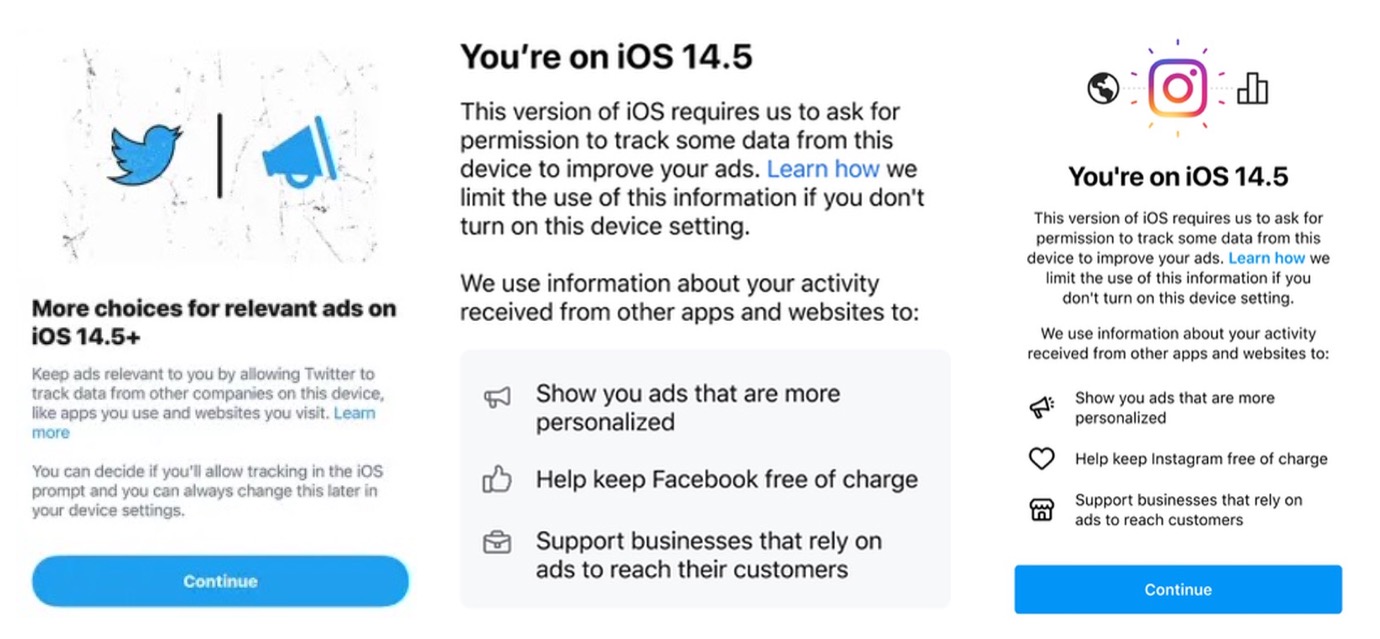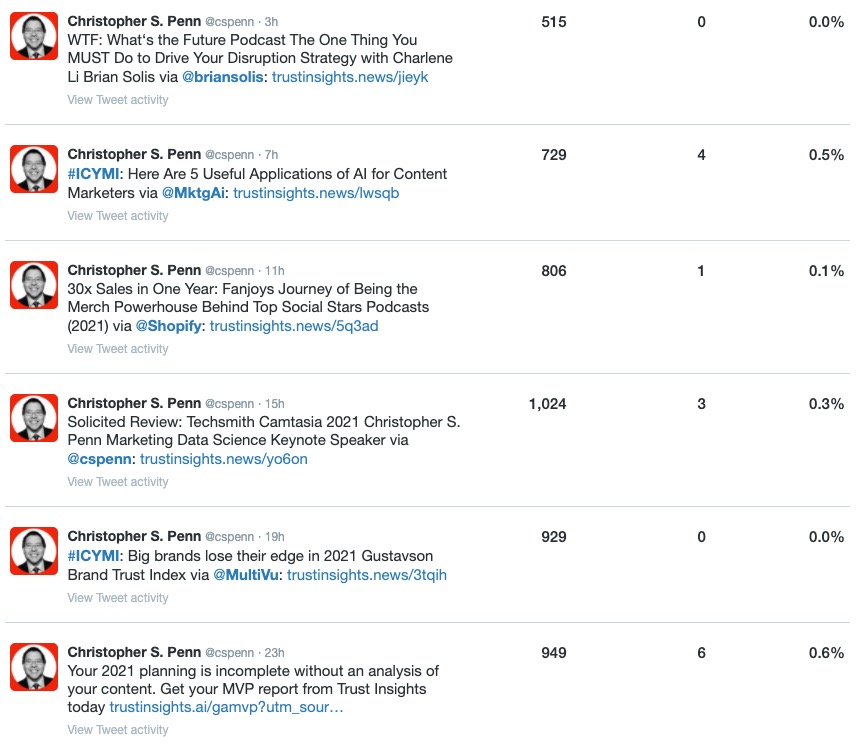
Here’s my question for all the apps begging users to re-enable ad tracking in iOS 14.5…

What have you been doing all this time with the data we DO give you?
Think about it for a moment. How much data do we voluntarily give different social network and content providers all the time? We share our viewing preferences, our search preferences, the people we interact with, the content we create. It’s a gold mine of information voluntarily and freely given.
What has the ad tech industry been doing this whole time with that data that they’re suddenly in a tizzy about losing access to cookies and other forms of user tracking?
Take a look at the publicly-available tweets I post, for example:

There’s enough information to infer a fair few things here, concepts I talk about a lot.
Look at my YouTube history:

Could you make some logical advertising inferences from this data? I would hope so.
What about all the things I share on Instagram?

Any half decent image recognition algorithm can pick out the obvious brands of the stuff I like. Why would Facebook or any ad tech company need any more data than that to create targeted ads that actually show me stuff I might want?
For example, just looking at my Instagram history alone, you can see a few instances of technology and a bunch of nature stuff. What could a half-decent advertising algorithm infer from that? Well, if you own an Omlet chicken coop, you’re probably not poor; they’re one of the more expensive coops available on the market. And if the nearest 5 pictures contain no fewer than 3 Apple devices, you’re definitely not poor. Do you need third party advertising data to show ads for more luxury brands? Definitely not. The majority of photos show nature of some kind; targeting this consumer just on six photos should be straightforward. Show this person eco-friendly, more expensive goods and services, renewable energy, and eco-smart tech brands.
Do you need to know the person’s age or gender or location to infer any of this? No. Ten seconds of looking at photos is enough to make some reasonable inferences.
Do this exercise with your own social feed. What could someone infer from what you share? Is that enough information to develop ads that would interest you?
What about a feed of a person who’s sharing only selfies all the time? That’s even easier! Show them lots of self-care stuff.
You might say, well, that’s fine for some users who are more engaged, but what about the passive consumer who is more of a lurker? Most ad systems have a term for that already – the lookalike audience, people who behave in similar ways, who like similar things.
Maybe someone doesn’t post all the time on Twitter but they like and retweet a ton of stuff. Show them ads for the things they like and retweet that match the likes and retweets of consumers who do share more often.
The future of marketing – and advertising in particular – is behavioral. Stop obsessing over whether someone is a 40-45 year old Asian male who lives in Massachusetts and start paying attention to what people do. Start paying attention to what people volunteer about themselves. The consumer is telling us – shouting at us – all the things they really want us to talk to them about.
The irony of this is that we would see much stronger ROI on our efforts if we did grow these capabilities. In no other industry can you fail 99.2% of the time and call that success, but in advertising, a 0.8% click through rate is a good thing. Perhaps ads perform so terribly because we haven’t spent any time investing in understanding what the consumer is already saying, and serving them things that align with the interests they’re talking about publicly.
Why aren’t companies doing this already?
First, we have a bad tendency as marketers to look for the easy button, and third-party data segments are easier and faster than doing the hard work of getting to know our audiences.
Second, we woefully underinvest in data analysis capabilities. Assembling models for this kind of work is challenging and expensive, and companies would rather shift that responsibility to someone else than develop rich data analysis capabilities themselves.
In the end, with privacy restrictions increasing, we will have no choice but to rely on what the consumer gives us voluntarily. Fortunately, billions of people are already telling us every single day what they want, what they’re interested in, what makes them happy. Most marketers just lack the will to invest in listening.
Want to get ahead of the curve?
- Develop your listening powers now.
- Invest heavily in data analysis, modeling, and machine learning now.
- Start giving customers what they are telling you they want more of now.
While your competitors struggle to rely on ever-declining ad performance, you’ll surprise and delight your customers all the way to the bank.
You might also enjoy:
- You Ask, I Answer: Reliability of LLMs vs Other Software?
- You Ask, I Answer: Retrieval Augmented Generation for Tax Law?
- Mind Readings: You Need Passwords for Life in the Age of Generative AI Fraud
- Almost Timely News, January 14, 2024: The Future of Generative AI is Open
- You Ask, I Answer: Legality of Works in Custom GPTs?
Want to read more like this from Christopher Penn? Get updates here:
 Take my Generative AI for Marketers course! |


Leave a Reply